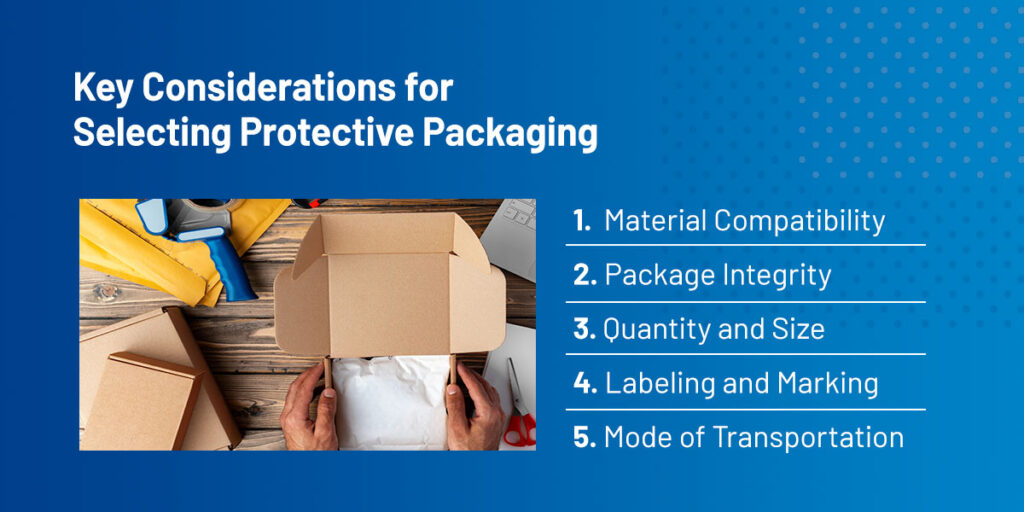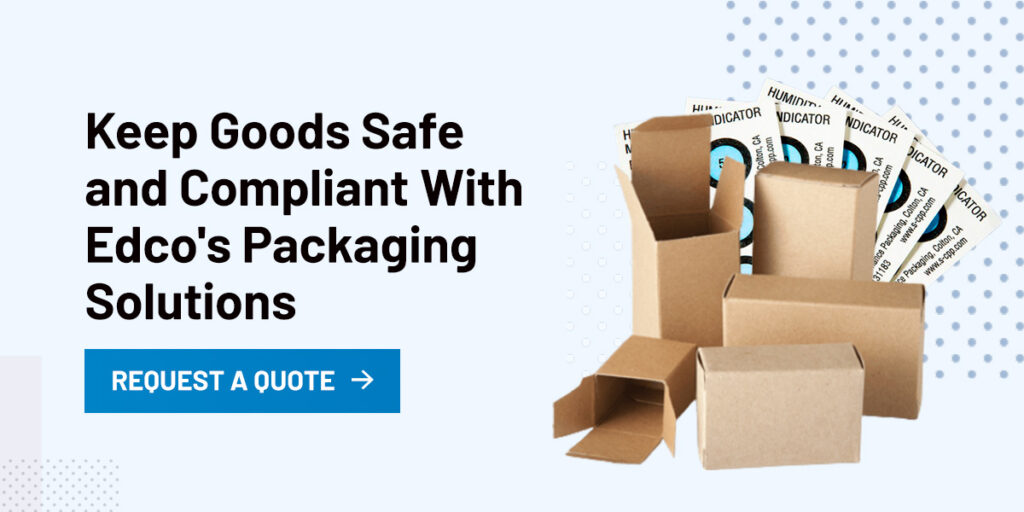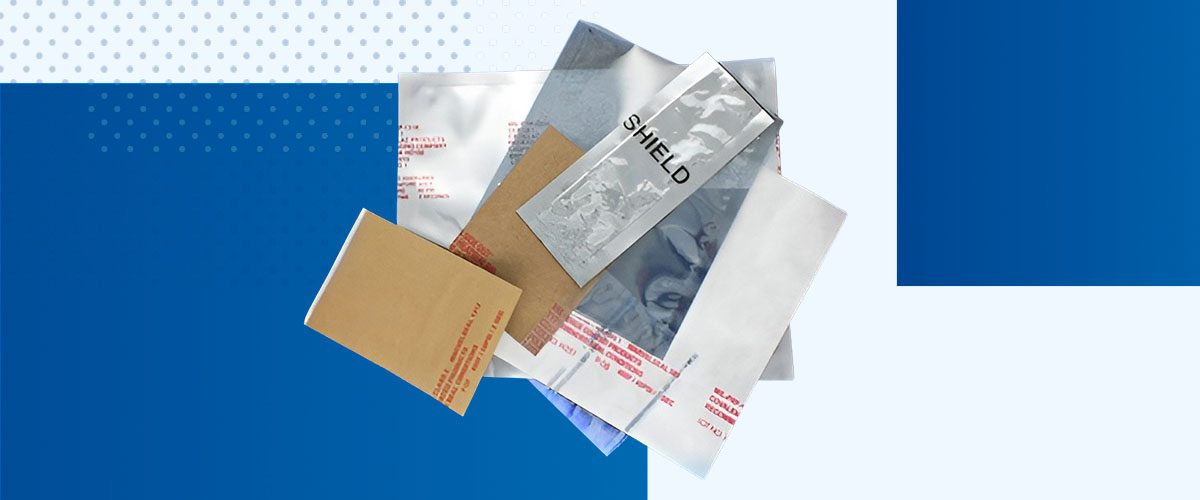Hazardous goods are essential for medical, military and industrial operations. These products must reach their destinations safely.
Undeclared hazardous materials cause approximately 1,500 transportation incidents annually. The correct packaging prevents these dangerous goods from causing harm. With the right materials and packaging, your business can stay compliant and safe.
A Classification Overview of Dangerous Goods
Dangerous goods, also called hazardous materials or hazmats, are substances that pose a risk to health, the environment or property. Hazmats can be gases, solids or liquids — any flammable, explosive, corrosive, toxic or reactive product is considered hazardous. Shipping these goods poses a risk if their packaging is compromised.
The United States Department of Transportation (DOT) assigns all dangerous goods to a hazard class:
- Class 1: Explosives
- Class 2: Gases
- Class 3: Flammable liquids
- Class 4: Flammable solids
- Class 5: Oxidizing substances and organic peroxides
- Class 6: Toxic and infectious substances
- Class 7: Radioactive material
- Class 8: Corrosives
- Class 9: Miscellaneous dangerous goods
Packing groups indicate the degree of danger presented by hazardous materials:
- Group 1: Great danger
- Group 2: Medium danger
- Group 3: Minor danger
Each class requires packaging designed to match its properties and danger level. Businesses must invest in protective packaging based on hazardous material classification and packing groups to minimize risks and meet regulatory standards.
The Importance of Compliant Dangerous Goods Packaging
Shipping hazardous materials is a legal responsibility. Failure to use compliant packaging can lead to penalties, environmental issues and serious accidents. Shippers are required to follow hazmat standards set by DOT, the International Air Transport Association (IATA) and the International Maritime Dangerous Goods (IMDG) Code.
Compliance requires using certified packaging. Hazmats must be shipped in containers tested and approved to withstand drop, temperature, compression and pressure conditions. Performance-oriented packaging ensures materials remain stable in real-world situations.
Using the wrong packaging can harm people and the environment. For example, using metal near a corrosive substance could damage the container, risking handler safety. Proper packing materials protect your business, the public and anyone involved in shipping.
Key Considerations for Selecting Protective Packaging
Companies shipping dangerous goods must remain compliant, so how do they choose the right packaging? Operations must follow regulations, evaluate materials and consider the entire shipping process to improve safety and efficiency.

1. Material Compatibility
Businesses must avoid packing dangerous goods using incompatible materials. Evaluate your product’s potential for reactions and chemical compatibility— the wrong material can lead to container failure and dangerous reactions. For example, if you’re shipping acids or bases, look to polyethylene or plastic-lined containers. Steel drums rated for high pressure suit flammable liquids. The key is to find materials that won’t degrade or react to the product.
2. Package Integrity
Rough shipping routes with drops, vibrations and temperature shifts can compromise weak packing materials. Durable packaging prevents leaks and breakage. Match the packaging to the transport mode and hazmat packing group. Look for crimped caps, pressure-tested lids and tamper-evident seals to add security. Extra cushioning will further protect goods from impact.
3. Quantity and Size
Regulations may limit the volume of dangerous goods you can ship in a single container. Limitations vary by hazard class, packing group and transportation method. Overfilling or undersizing packaging can increase the chances of damage or leaks. Shippers can reduce this risk by choosing correctly sized containers and inner packaging. Layering increases containment protection and durability.
4. Labeling and Marking
Proper labeling and marking cannot be overlooked. Even high-quality packaging needs clear labels to alert handlers and inspectors of hazardous materials. Every package must display the correct hazard labels, identification number and proper shipping name. Use durable labels that resist fading and peeling. Any omissions or marking errors can lead to regulatory violations and shipping delays.
5. Mode of Transportation
The transportation method also impacts packaging type. Air, sea and ground transport will have different standards since each has a different exposure risk. Air shipments need packaging that’s been tested to withstand cabin pressure changes. Sea routes demand moisture-resistant materials to keep out seawater. Talk to your packaging partner about material suitability for each travel route and specific regulations.
Types of Protective Packaging Solutions
Once you understand packing group danger levels, it’s time to find the right shipping solution. The correct type of packaging will depend on the material, hazard classification, volume and transportation method. Here are some of the most common packing options for hazmats.
Drums
Companies use drums to ship liquids and solids. All drums must meet performance standards for leakproof construction and stacking strength to ensure safety. Material options include:
- Steel: Steel has high durability options that can handle flammable or corrosive liquids.
- Plastic: Choose plastic for lightweight shipping and acid and base resistance.
- Fiber: This material is cost-effective for shipping dry goods and less-reactive materials.
Boxes
Corrugated fiberboard boxes are a standard shipping method. To improve shipping protection, use them with inner packaging like bottles or bags. Double- or triple-wall boxes work well for heavier or higher-risk items since they provide additional protection. Reinforced seams and tape sealing make boxes even stronger.
Jerricans
Jerricans are rigid rectangular containers made from plastic or metal. Jerricans provide excellent leak and impact resistance — plus, their shape makes them easy to pack and secure. You can use them for moderate-volume shipments.
Intermediate Bulk Containers (IBCs)
IBCs are large, reusable containers businesses use for bulk shipments of hazardous liquids or solids. Based on your goods, choose from rigid plastic, composite or metal designs. IBCs have integrated valves and cages for additional control and stability during transport. They’re a great option for reducing handling and offer a cost-effective transport method for high-volume products.
Specialized Packaging
If you’re transporting highly sensitive or non-standard materials, you likely need specialized packaging. Radioactive substances, reactive chemicals and infectious agents are especially hazardous. Custom-engineered packaging provides solutions based on these unique risks. Some special features include:
- Pressure-relief systems.
- Multilayer barriers.
- Temperature control features.
- Integrated absorbents.
Choose specialized solutions to ensure compliance with the strict regulations around high-risk goods.

Keep Goods Safe and Compliant With Edco’s Packaging Solutions
When shipping dangerous goods, there’s no room for error. The wrong packaging could damage the product and risk the safety of everyone along the supply chain. Avoid compliance and product quality concerns with Edco Supply Corporation’s packaging. We provide protective solutions that meet industry performance standards and support a range of hazard classes. All our military specification products follow the standards set by the government.
We have over 60 years of industry experience in mil-spec and industrial packaging. Edco is a trusted partner for military contractors, electronics producers and manufacturers worldwide. Our team can help you find specialized solutions for your shipping needs. From material selection to verified quality materials, we’re here to support your business. Reach out online for a quote, or contact us to discuss your packaging concerns.



